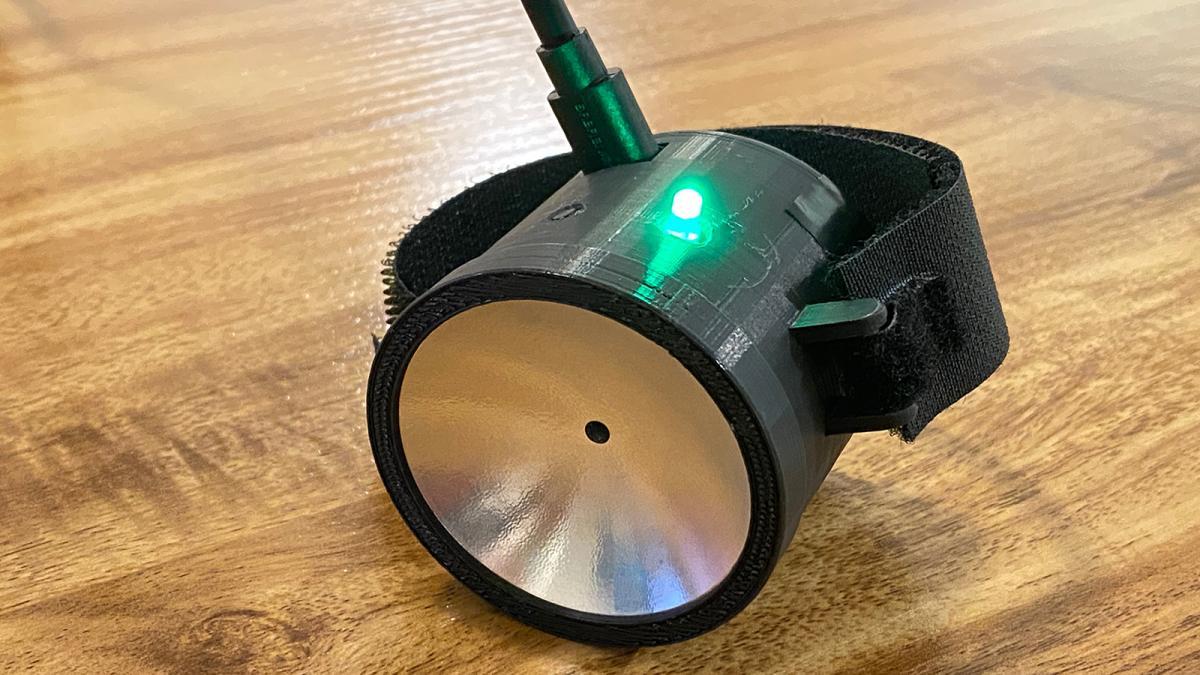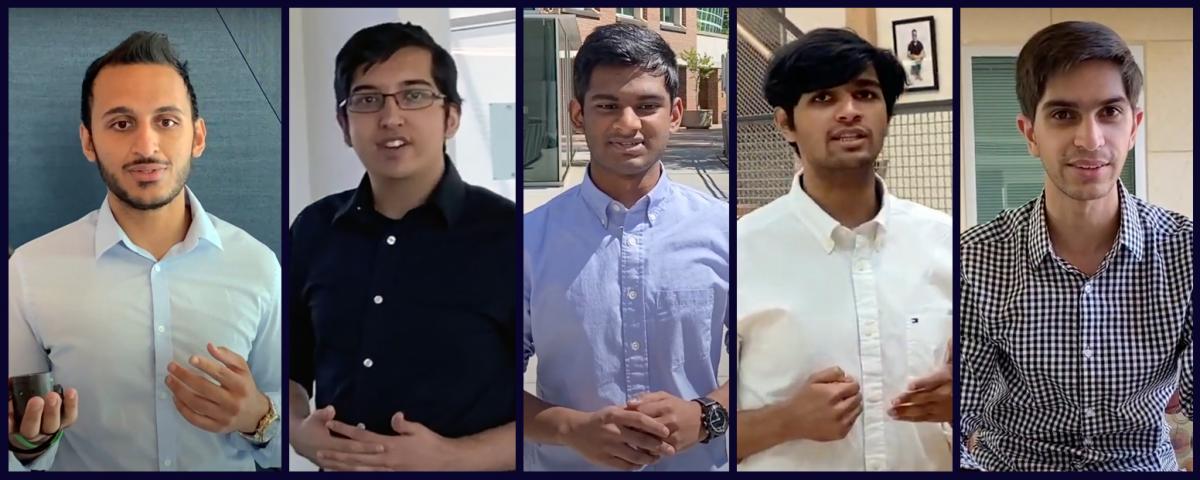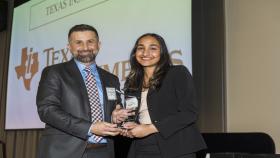Patients already were taking advantage of telemedicine options before the pandemic, when social distancing requirements caused a dramatic surge in remote doctor's visits. The approach can be more comfortable, accessible, and a less costly alternative to the traditional in-person visit.
But current telemedicine practices are limited to discussing patient history and a visual exam. That covers just 25 percent of the data a doctor would collect during a typical in-person checkup.
That’s where the HeartThrobs enter the picture.
The team of five recent graduates from the Wallace H. Coulter Department of Biomedical Engineering at Georgia Tech and Emory University recently won the $15,000 Venture Prize in the national 2021 DEBUT Challenge for their AusculBand device, a long-distance stethoscope that provides real-time and pre-recorded data to physicians. The device expands virtual exam capabilities, allowing a physician to listen to a patient’s heart, lungs, and abdominal sounds and provide a more comprehensive assessment during a virtual visit.
“This is great validation of what we’ve designed,” said Ram Akella, chief strategy officer for HeartThrobs. “And it’s some important early funding to do prototyping and customer discovery, which can help our project in the long run. We want to keep the momentum going.”
Akella and his teammates — Keval Bollavaram, Ahdil Gil, Atharv Marathe, and Sil Savla — got acquainted as undergrads in the Coulter Department, where they took the senior Capstone Design course in the spring.
“We realized we had these specialized skillsets — software design, electronics, app development, web development, machining, material science, research,” said Bollovaram, the team’s chief operating officer. “We brought all those together, and we all complement each other’s talents.”
When their device failed to win anything at the spring Capstone Expo, they were disappointed but not discouraged. Professor of the Practice James Rains, their mentor and leader of the BME Capstone program, loved the project and suggested the team consider other competitions.
The HeartThrobs was one of 30 teams to reach the semifinals in the Boston Scientific Connected Patient Challenge this summer. Then they learned in late August they’d won the Venture Prize.
The Design by Biomedical Undergraduate Teams (DEBUT) Challenge is a national competition supported by the NIH’s National Institute of Biomedical Imaging and Bioengineering and VentureWell, a nonprofit formerly known as the National Collegiate Inventors and Innovators Alliance. Teams must present a solution to a real-world healthcare need. The HeartThrobs were one of eight winners.
“Access to healthcare is one of the biggest problems in the field,” said Bollovaram, adding that almost 50 million Americans live more than an hour’s drive away from the nearest hospital, but 96% of those people have access to a mobile device. “We believe telemedicine is the solution to getting these people the healthcare they deserve.”
Even people who live close to healthcare centers are using telemedicine in greater numbers.
“The use of telemedicine has been catalyzed by the Covid-19 pandemic,” Bollovaram said. “While the world has suffered from the pandemic, we think that now is the perfect time to develop new solutions to address the evolving healthcare environment.”
The group’s AusculBand digital stethoscope is easy for patients to use at home, where they can record cardiac and pulmonary sounds or let the doctor listen live during a telehealth visit. The device has no earpieces and looks a bit like a headlamp with a band worn around the hand.
Savla said the team tested frequency response of the device’s internal circuitry and a did a noise comparison test against devices already available. They found the AusculBand was more than 50% clearer than the leading digital stethoscope. (Check out the team’s pitch video to hear heartbeats recorded with the device.)
The HeartThrobs have filed a patent application with Emory, and they plan to apply for one of Emory’s I3 – Imagine, Innovate, and Impact – Venture Awards.
“We’re pursuing a lot of different non-diluted funding opportunities, because we don’t want to give up equity in our company and don’t want to take on too much debt,” Bollovaram said. “The I3 grant at Emory is a great way to move us forward, so we’re working with them to provide us with funding for additional prototyping, additional testing, and access to clinical sites.”
Latest BME News
Jo honored for his impact on science and mentorship
The department rises to the top in biomedical engineering programs for undergraduate education.
Commercialization program in Coulter BME announces project teams who will receive support to get their research to market.
Courses in the Wallace H. Coulter Department of Biomedical Engineering are being reformatted to incorporate AI and machine learning so students are prepared for a data-driven biotech sector.
Influenced by her mother's journey in engineering, Sriya Surapaneni hopes to inspire other young women in the field.
Coulter BME Professor Earns Tenure, Eyes Future of Innovation in Health and Medicine
The grant will fund the development of cutting-edge technology that could detect colorectal cancer through a simple breath test
The surgical support device landed Coulter BME its 4th consecutive win for the College of Engineering competition.









